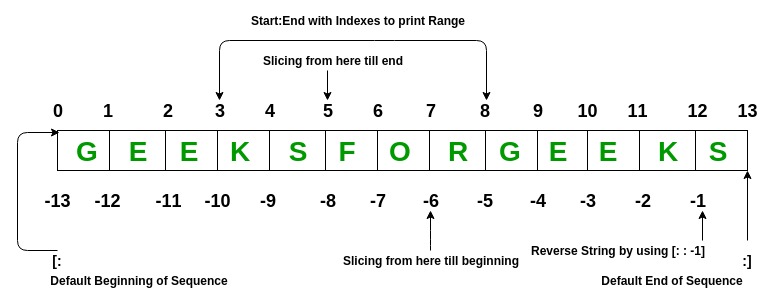List slicing in Python
List slicing in Python

I'm happy to help! Here's the information you requested:
List Slicing in Python
List slicing is a powerful feature in Python that allows you to extract a subset of elements from a list. This is done by specifying a range of indices, which are used to select specific elements from the original list.
The basic syntax for list slicing is:
my_list[start:stop]
Here:
my_list is the name of your original list. start is the index of the first element you want to include in your subset (inclusive). stop is the index of the last element you want to include in your subset (exclusive).
For example, let's say we have a list called fruits that contains 5 elements:
fruits = ['apple', 'banana', 'cherry', 'date', 'elderberry']
If we use the following slicing operation:
print(fruits[1:3])
The output will be:
['banana', 'cherry']
This means that we've extracted a subset of 2 elements from the original list, starting from index 1 (inclusive) and ending at index 3 (exclusive).
Slicing with Negative Indices
Negative indices can also be used in list slicing. In this case, the count starts from the end of the list.
For example:
print(fruits[-2:])
The output will be:
['date', 'elderberry']
Here we're using a negative index -2, which means "start 2 elements from the end of the list". The : at the end indicates that we want to extract all remaining elements up to the end of the list.
Slicing with Stepping
In addition to specifying start and stop indices, you can also use stepping to control the increment between elements. This is done by adding a third value, separated from the other two values by a colon (:).
For example:
print(fruits[1:4:2])
The output will be:
['banana', 'cherry']
Here we're using stepping to extract every 2nd element from index 1 (inclusive) to index 4 (exclusive). The result is a subset of 2 elements.
Common Use Cases for List Slicing
List slicing has many practical applications in Python programming. Here are a few examples:
Extracting the first or last element(s) of a list:my_list[0], my_list[-1] Filtering out certain elements: my_list[::2] extracts every 2nd element Creating new lists with specific subsets of elements: new_list = my_list[1:3] Splitting a long list into smaller sublists: sublists = [my_list[i:i+5] for i in range(0, len(my_list), 5)]
In conclusion, list slicing is a versatile and powerful feature in Python that allows you to extract subsets of elements from lists with precision and flexibility. With practice, you'll become proficient in using list slicing to solve various problems and streamline your code.
What is list [:] in Python?

I'd be happy to explain what list[:]" does in Python.
In Python, when you use the syntax list[:], it is called "slicing" and is used to return a subset of elements from the original list. The : part indicates that you want to access all elements in the list, without stopping or stepping at any specific index.
So, what does this mean? Well, let's take an example:

my_list = [1, 2, 3, 4, 5]print(my_list[:])

When you run this code, you will get the output:
[1, 2, 3, 4, 5]

In other words, list[:] is essentially saying "give me all elements in the list, from start to end". It's like taking a snapshot of the entire list and printing it out.
Here are some important notes about slicing:
When you uselist[:], you don't have to specify an index range (like [0:5] or [1:4]). The : means "go from start to end", so you're getting all elements in the list. If you only want a subset of elements, you can modify the syntax by specifying an index range. For example, list[1:3] would give you elements 1 and 2 (indexing starts at 0). You can also use negative indexing, where -1 refers to the last element in the list, -2 refers to the second-to-last element, and so on.
Now, what if we modify our original code to print(my_list[1:])? This would give us:
[2, 3, 4, 5]
In this case, we're telling Python to start at index 1 (which is the second element in the list) and go all the way to the end. So we skip the first element (1) and print out everything else.
The beauty of slicing is that it can be used on many types of sequences, not just lists. You can use it on tuples, strings, dictionaries (in certain cases), and even other data structures like sets or arrays!
And if you're wondering what happens when you try to slice an empty list...
Well, let's just say Python won't throw any errors or warnings if you do something like print(empty_list[:]). In fact, it will simply return an empty list:
[]
This might seem counterintuitive, but it makes sense when you think about it. If the original list is empty, what would you expect the sliced version to be? An error message? A warning? Or just another empty list? Yeah, I thought so!





























